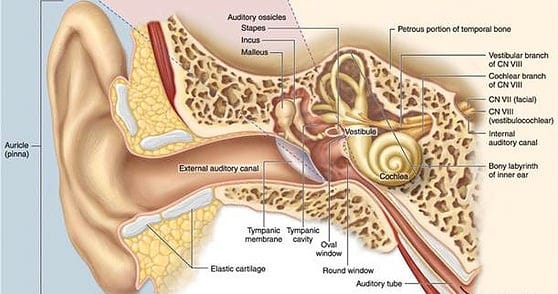Hello, hello…
We’re gonna talk about vertigo!
vevo.com
If you don’t know who this is or what song that’s from, congratulations!
U2 references aside, vertigo is a condition that affects many people and can have a significant effect on quality of life. The technical term is Benign Paroxysmal Positional Vertigo, or BPPV for short. That breaks down into: Benign (not life-threatening) Paroxysmal (comes and goes quickly) Positional(caused by certain positions/movements) Vertigo (the false sensation of spinning).
A study from 2013 placed the lifetime prevalence of vertigo at around 2.4%, meaning ~7.6 million(!) people in the US will experience it sometime in their lifetime! The condition is something that many people think of when they think of balance and dizziness problems, but most do not know that it is something specific and very treatable.
First a brief background on how balance works. The body draws from 3 systems to work out your upright balance:
-
Vision is vision; if you’re reading this, then congratulations! It’s working well enough.
-
Proprioception is basically being able to tell what position your joints are in. For example, as I sit here typing this I can tell that my knees are bent, even though I can’t see them under my desk.
-
Vestibular information from the inner ear. This is where vertigo really comes into play and it will require a deeper dive to fully explain.
giphy.com
I think his proprioception deficits might need some attention
The vestibular system is named after the vestibular organ, which sits in the inner ear. In diagrams it often looks like a squid and a snail got into a fight and the squid chased the snail back into its shell to exchange a few choice words.
http://utahhearingandbalance.com/
And suddenly a nonsense statement becomes crystal clear.
That organ is filled with fluid and contains areas lined with tiny hair cells. The arms of the squid are called semicircular canals and when the head rotates the fluid moves and bends the little hair cells. The brain can tell how much of a tilt is occurring based on the amount of bending that occurs in the hair cells.
In order to detect movement in a straight line the vestibular organs uses a different, but similar, system. There are sections of the vestibular organ that have tiny crystals in them to make detecting linear movement and acceleration easier. The problem with vertigo arises when these crystals break free and make their way into one of the three semicircular canals (the squid arms).
The trespassing crystals then bounce around the semicircular canals, bend the hair cells, and trick your brain into thinking that your head is spinning. Because this is caused by the invasion of certain canals, the vertigo is triggered by specific movements that affect that particular canal. For example, turning in bed to the left may be just fine, but turning to the right might lead to a vertigo attack.
In the next installment, we will cover how to diagnose BPPV and what treatment looks like!
giphy.com
Don’t worry, Ness! We’ll get you fixed up.







